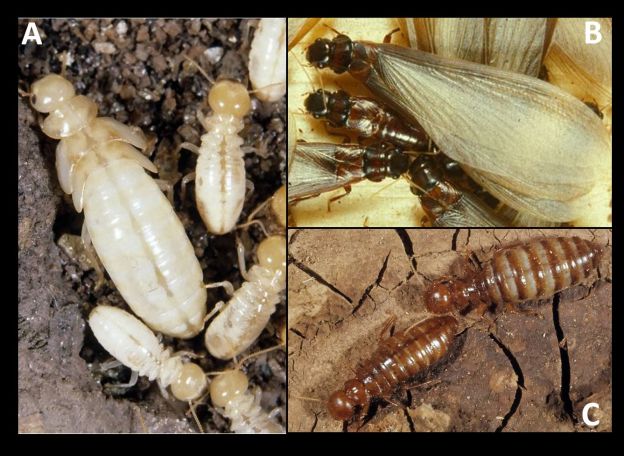Our new termite evolution paper, led by Thomas Bourguignon, is now online at American Naturalist. The ancestors of termites were solitary cockroaches. Around 170 million years ago, something drove these cockroaches to become social and to have distinct castes. What were these driving forces and in what steps did termite evolution proceed? In bees and wasps sociality evolved first, and the distinct castes evolved second. In our new paper, we argue that the reverse occurred in termites. We present evidence that the first step in termite evolution was the appearance of a new wingless body type, as an alternative, terrestrial, strategy to the ancestral winged body type. The new wingless body type minimised the risks of aerial predation when dispersing. We propose that sociality in termites evolved only after the winged–wingless diphenism was well established.

Individuals of the basal termite species, Mastotermes darwiniensis, including (A) a large juvenile nymph with smaller wingless non-reproductive workers, (B) winged reproductives (kings and queens), and (C) wingless reproductives. Photos by David McClenaghan, released on Commonwealth Scientific and Industrial Research Organization ScienceImage under the Creative Commons Attribution 3.0 unported license.
